Aggression in a puppy is something that causes pet parents to worry, understandably so!
Afterall, it’s not what you’ve imagined, is it? When you, as a new pet parents bring home their puppy for the first time, you likely imagine playtimes in the backyard, trips to the dog park, and all the fun memories you’ll make with your new furry friend.
Because of this, seeing your puppy growl or lunge, whether at you or another dog, can be a big—often scary—surprise.
But it’s important to take a breather and look at puppy behaviour and figure out if this is truly aggression or aggressive behaviour. Still it’s something you’ll want to figure out and remedy as soon as possible, it being tackled right away makes it so much easier to live with your puppy throughout their future with you!
Before you label your puppy aggressive, read on to learn how to identify truly aggressive behaviors and training techniques to stop the acts of aggression before your dog fully matures.
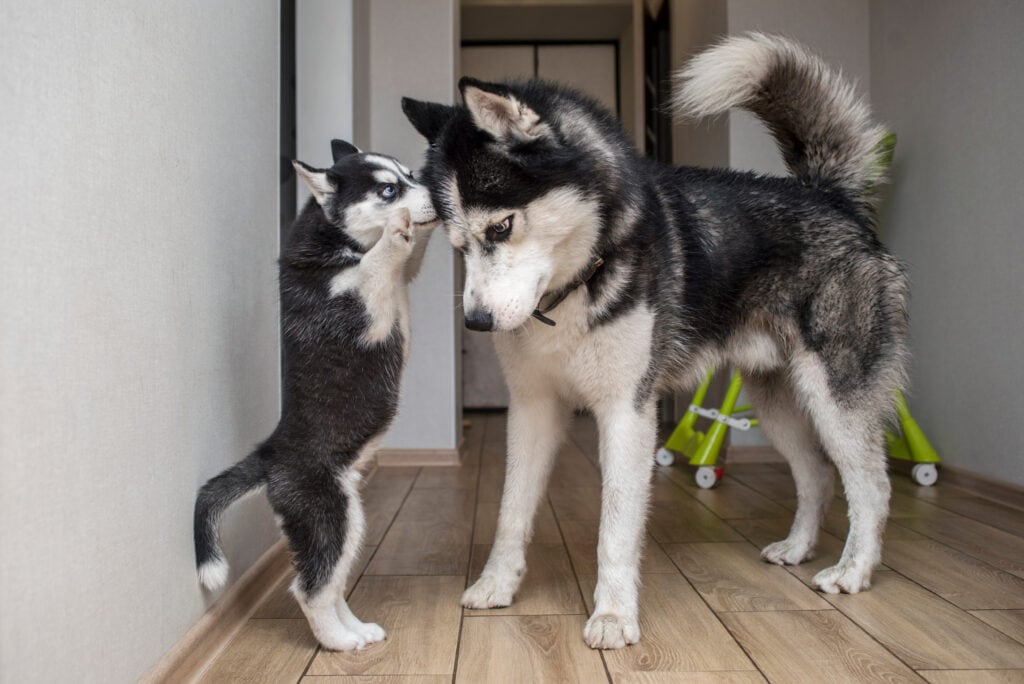
How Do I Know If My Puppy Is Truly Aggressive?
This one is a tough one. Because typically puppies are not truly aggressive – I’ve still yet to personally see a case like this.
Labels (especially ones such as this!) can be problematic, so please avoid labelling them as aggressive until you involve a trainer or behaviourist! Labels are really powerful with dogs, and if you mis-label your dog? Then it can have pretty bad consequences. So, please do be careful before you apply that label.
Aggressive Puppy Behavior vs Normal Puppy Behavior
Lunging, barking, and biting can seem like aggression at first glance, but these can also all be part of your puppy’s normal development or play style.
Before labelling your dog aggressive, consider one of the following scenarios.
1 – Your Puppy Has a Rough Play Style
Puppies will often pounce on one another or bite the scruff of each other’s necks during playtime, and it can be difficult to distinguish between normal puppy play and warning signs of aggression.
One key sign to look for is reciprocity. If puppies are playing, they will take turns being the aggressive ones in the playgroup. One puppy will pounce on another, and then the other will have a turn.
If your puppy seems to be constantly aggressive while the other puppies in the playgroup don’t get a chance, then it’s likely aggressive behavior and not play.
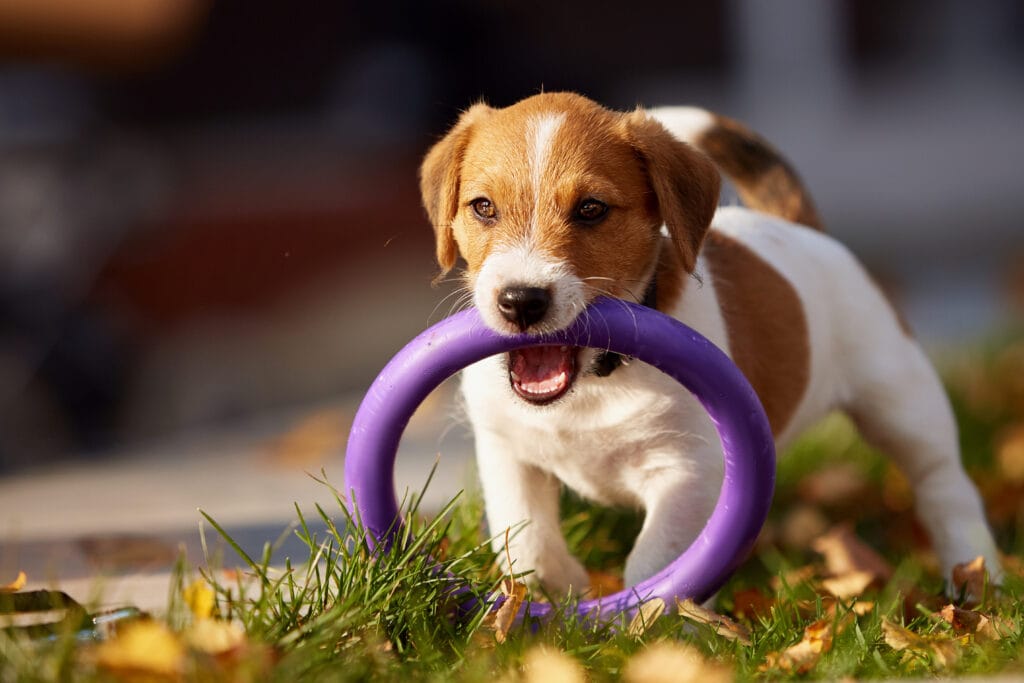
2 – Your Puppy is Teething
Around 16 weeks, your puppy will go through a teething phase—just like babies—where they want to chew on anything and everything.
Your puppy is losing their baby teeth and gaining new adult teeth, and that process is uncomfortable. To soothe their aching gums, puppies will reach for the nearest thing to chew on, whether that’s a toy, your furniture, or your ankles.
It can also make them grumpy – after all – this is (hopefully!) the most painful experience in your puppy’s young life. So they may be more cantankerous than normal! This will make them more inclined to bite.
While biting may seem aggressive, this behavior is normal when your puppy is teething. You can offer your pup lots of toys, especially frozen ones, to help ease discomfort and keep them from inappropriate biting behaviors.
3 – Your Puppy is Overtired
Just like toddlers, puppies don’t know their limits or how to communicate those limits to their parents. If your puppy has had a lot of exercise, spent a long time training, or just went past their typical nap time, they can get cranky, and cranky means bitey.
Because they don’t know any other way to express their feelings, your puppy may start barking, growling, or destructively chewing. If your puppy’s aggression seems new and out of the blue, it’s likely because they’re overtired. You may notice that this happens around the same time every day, or after a certain point in their routine.
Give your puppy plenty of structured nap times throughout the day, and monitor how much physical and mental exercise they are getting.
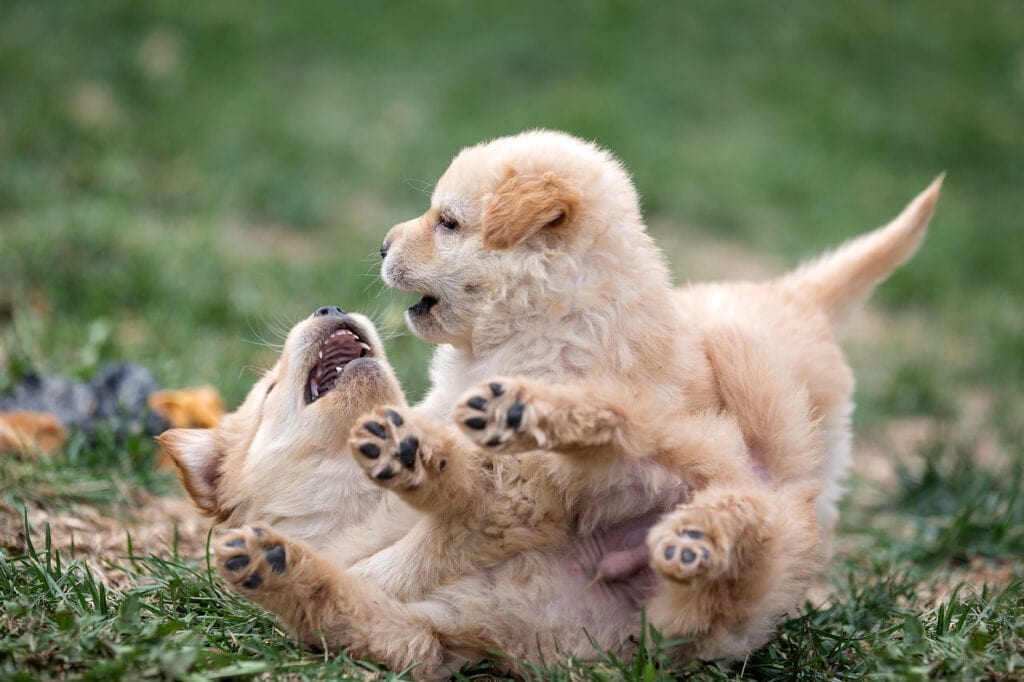
4 – Your Puppy is (likely) a Normal Puppy
Puppy biting is a normal part of your dog’s development. Their mouth is a major part of how your dog interacts with the world, and biting can often be their way of exploring.
They’ll bite objects, furniture, other animals, or people as a means of taking in sensory information and learning about the world around them. Puppies also have no concept of how hard they can bite and the type of damage that can do.
While puppy biting is a behavior that you want to train out of your dog, it doesn’t mean they’re aggressive. Train them through that biting instead.
Does that sound right?
Typically, these reasons will quickly resolve “Aggression” in puppies, because it’s not often a true aggression. But, if you’re noticing that your puppy might be bullish, or rude? Then let’s look at this step by step.
5 Tips to Train an Aggressive Puppy
If your puppy is demonstrating aggression, such as stiff body posture, refusal to stop biting during play, or resource guarding, here are a few tips to help train more positive behaviors.
1 – Make Socializing Your Puppy a Priority
As a puppy, your dog hasn’t yet learned manners or how to interact with the world around them. A key way to show your puppy safe, appropriate behaviors is through socialization and exposure to new experiences.
If your puppy has older dogs that they can interact with, that’s a great way for them to see a model of appropriate play behaviors (though, do remember to advocate for your older dog too!).
Taking your dog to puppy training classes, for walks in new neighborhoods, or even just to the local pet store is also great exposure for them.
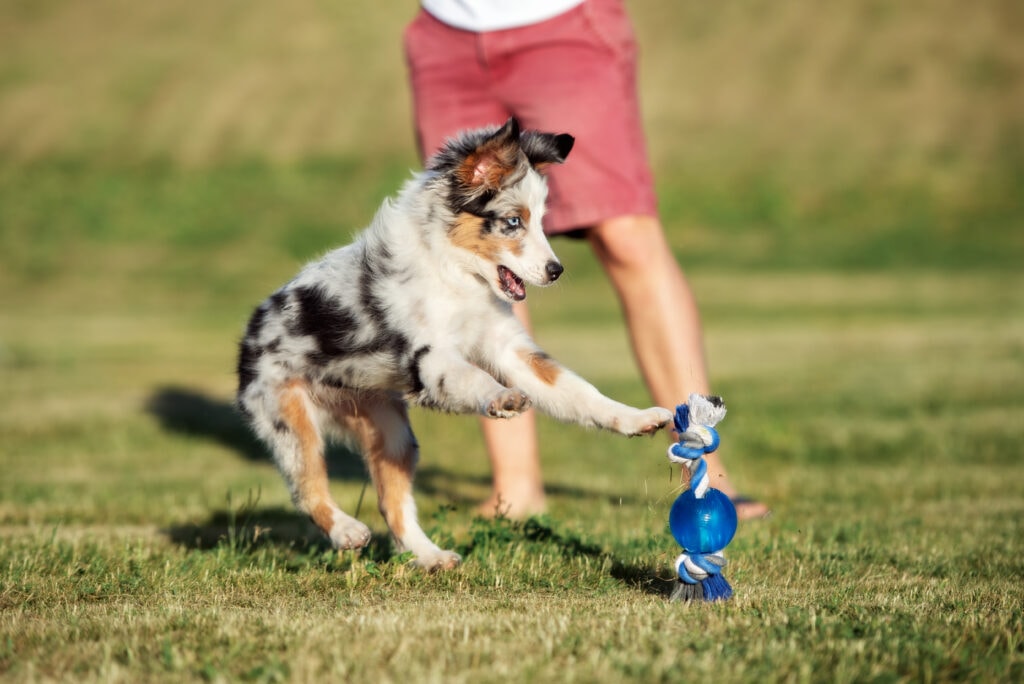
2 – Interrupt the Aggressive Behaviors
Interrupting the aggressive behaviors as they happen is a fast way to help your puppy learn their limits. While it’s tempting to yell at your puppy, this will only confuse them and may make the situation worse.
Instead, simply redirect their attention onto something else, like a chew toy or stuffed toy. This gives them an appropriate place to direct their energy and establishes bite inhibition.
3 – Give Your Puppy a Break
Sometimes, like with children, your puppy may just be too excited and too wound up to make good decisions. If you see that their play time with another dog is getting out of hand or it seems like they’re no longer listening to you, it’s time for a break.
Remove your puppy from the situation and take them away to another room where it’s quiet or to their crate if you’ve started crate training.
This isn’t a punishment, and shouldn’t be treated as one. Instead, talk to your puppy in a calm voice, and reward them with praise and treats when they seem to be settling down.
4 – Teach Your Dog Obedience Commands
Obedience training is about more than teaching your puppy tricks. It helps strengthen your communication skills and gives you the tools to address your dog’s behaviors.
Sit, stay, and lie down can all be effective ways to interrupt the aggressive behaviors, and these commands can also help shape new behaviors for your puppy, so they can build positive social habits.
For example, if your dog shows signs of food aggression or resource guarding, you can use the sit and stay commands to introduce impulse control.
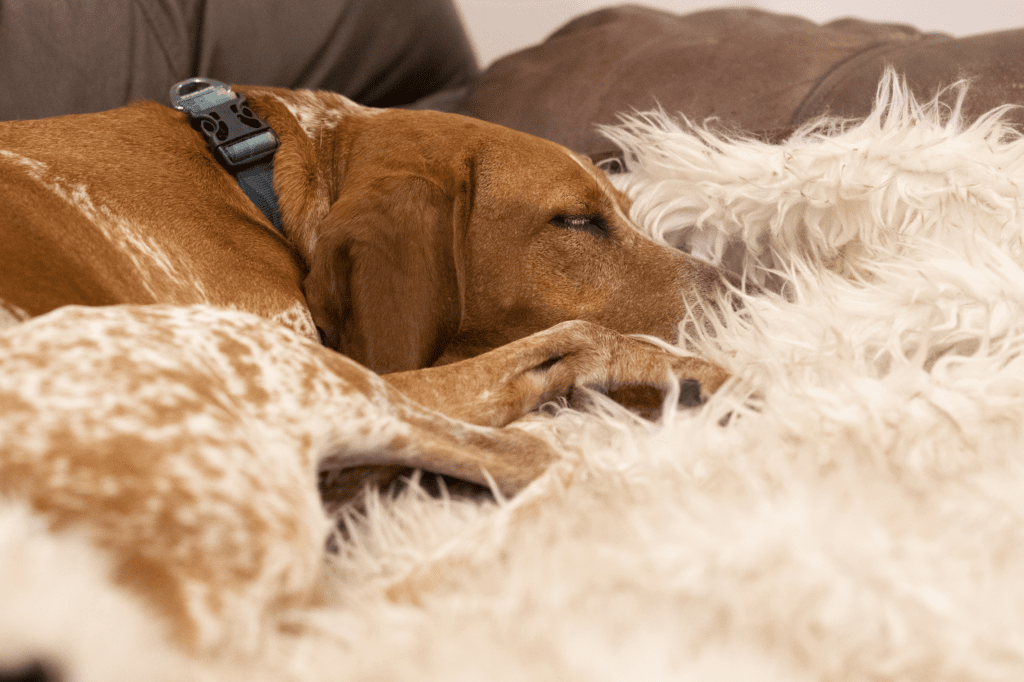
5 – Use Positive Reinforcement Training
Whether you train your puppy at home or you work with a professional trainer, it’s important that anyone involved in the training uses positive reinforcement training methods.
Aggressive behaviors can be scary for pet parents to witness, and yelling at your dog or punishing them in some way is a natural reaction. Punishment will only further upset your puppy, however, and can worsen the aggressive behaviors over time.
Positive reinforcement methods reward your puppy for good behavior and allow your puppy to make the right decisions themselves. When your puppy actively chooses to display good behavior, these behaviors are more likely to stick around through adulthood.
Is Your Puppy Being Aggressive?
As pet parents, you want to create the best life possible for your puppy and to help them grow into sweet, well-mannered canine citizens.
That means understanding your puppy’s behaviors, distinguishing between true aggression and normal puppy development, and instilling positive behavior habits from a young age.
If you are worried about your puppy being truly aggressive, then please do get in touch, and let’s discuss your puppy’s situation.

Author, Ali Smith
Ali Smith is a professional, qualified, and multi-award winning trainer is the founder of rebarkable. She has always believed animals deserve kindness and champions force free methods. Believing that dog guardians will all choose the kindest options if proper information is provided, she aims to help all dog guardians who need it and make dog training as accessible as possible
Ali lives win Maryland, US with her husband and her three dogs.

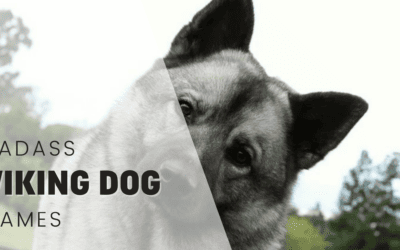
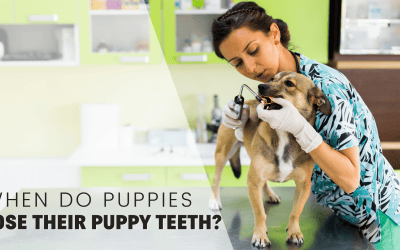
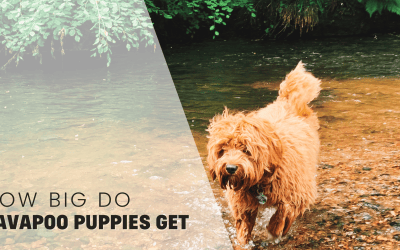
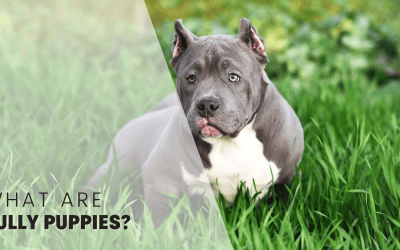
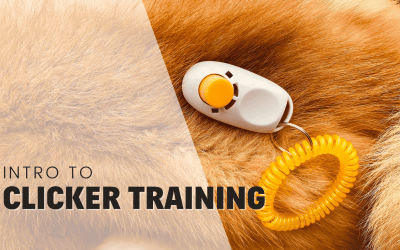
0 Comments